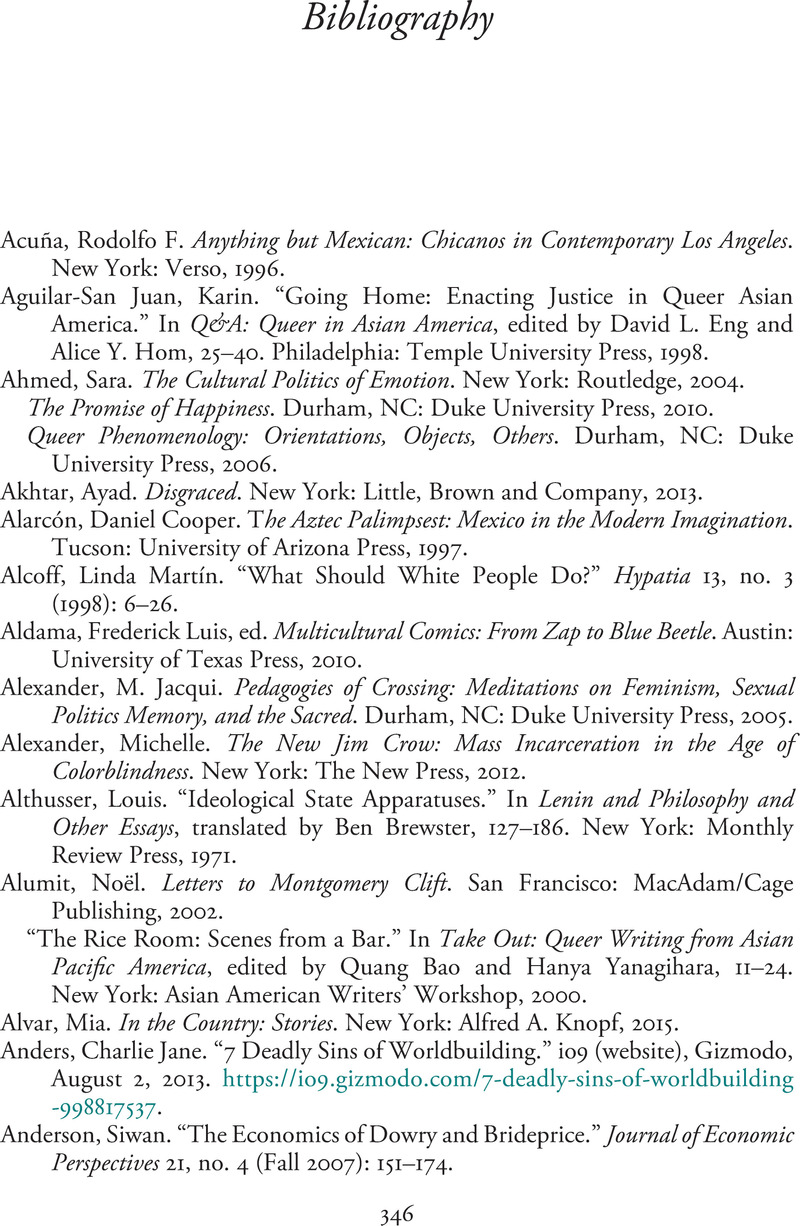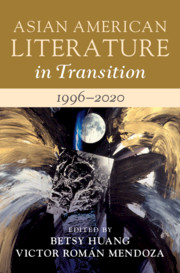Book contents
- Asian American Literature in Transition, 1996–2020
- Asian American Literature in Transition
- Asian American Literature in Transition, 1996–2020
- Copyright page
- Contents
- Illustrations
- Contributors
- Series Preface
- Acknowledgements
- Introduction
- Part I Neoimperialisms, Neoliberalisms, Necropolitics
- Part II Intersections, Intimacies
- Part III Genres, Modalities
- Part IV Movements, Speculations
- Bibliography
- Index
- References
Bibliography
Published online by Cambridge University Press: 27 May 2021
- Asian American Literature in Transition, 1996–2020
- Asian American Literature in Transition
- Asian American Literature in Transition, 1996–2020
- Copyright page
- Contents
- Illustrations
- Contributors
- Series Preface
- Acknowledgements
- Introduction
- Part I Neoimperialisms, Neoliberalisms, Necropolitics
- Part II Intersections, Intimacies
- Part III Genres, Modalities
- Part IV Movements, Speculations
- Bibliography
- Index
- References
Summary

- Type
- Chapter
- Information
- Asian American Literature in Transition, 1996–2020 , pp. 346 - 378Publisher: Cambridge University PressPrint publication year: 2021



